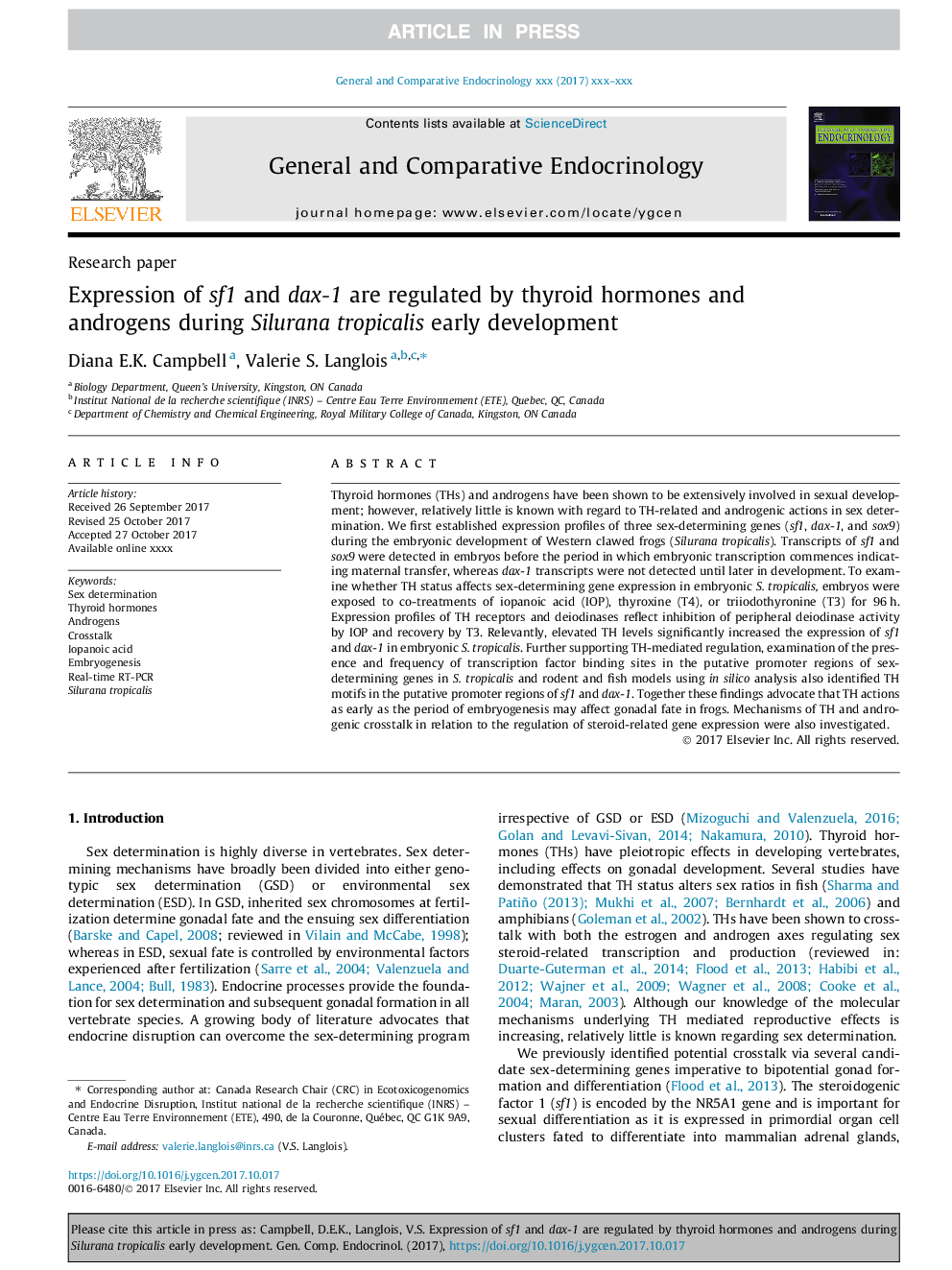| Article ID | Journal | Published Year | Pages | File Type |
|---|---|---|---|---|
| 8631122 | General and Comparative Endocrinology | 2018 | 11 Pages |
Abstract
Thyroid hormones (THs) and androgens have been shown to be extensively involved in sexual development; however, relatively little is known with regard to TH-related and androgenic actions in sex determination. We first established expression profiles of three sex-determining genes (sf1, dax-1, and sox9) during the embryonic development of Western clawed frogs (Silurana tropicalis). Transcripts of sf1 and sox9 were detected in embryos before the period in which embryonic transcription commences indicating maternal transfer, whereas dax-1 transcripts were not detected until later in development. To examine whether TH status affects sex-determining gene expression in embryonic S. tropicalis, embryos were exposed to co-treatments of iopanoic acid (IOP), thyroxine (T4), or triiodothyronine (T3) for 96â¯h. Expression profiles of TH receptors and deiodinases reflect inhibition of peripheral deiodinase activity by IOP and recovery by T3. Relevantly, elevated TH levels significantly increased the expression of sf1 and dax-1 in embryonic S. tropicalis. Further supporting TH-mediated regulation, examination of the presence and frequency of transcription factor binding sites in the putative promoter regions of sex-determining genes in S. tropicalis and rodent and fish models using in silico analysis also identified TH motifs in the putative promoter regions of sf1 and dax-1. Together these findings advocate that TH actions as early as the period of embryogenesis may affect gonadal fate in frogs. Mechanisms of TH and androgenic crosstalk in relation to the regulation of steroid-related gene expression were also investigated.
Keywords
Related Topics
Life Sciences
Biochemistry, Genetics and Molecular Biology
Endocrinology
Authors
Diana E.K. Campbell, Valerie S. Langlois,
